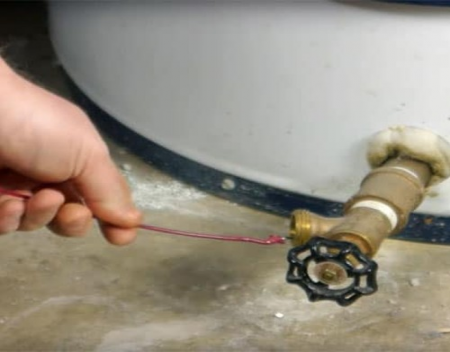Tipos de aparatos
- Aire acondicionado
- Automobile
- Chainsaw
- Circular Saw
- Lavaplatos
- Drills
- Secadora
- Drywall Screw Gun
- Horno
- Gas Fireplace
- Gas Grill
- Gas Patio Heater
- Grinder
- Heat Pump
- Impact Driver
- Impact Wrench
- Microonda
- Nailer
- Orbital Sander
- Calentadores de piscina
- Powerwall
- Distancia
- Refrigerador
- Television
- Lavadora
- Calentador de agua
Marcas de electrodomésticos
- A.O. Smith
- AccuCold
- Admiral Craft
- AGA
- Airrex
- Amana
- Ambiance
- American Range
- American Standard
- American Water Heaters
- Aquacal
- Armstrong
- Asko
- Avanti
- Avenlur
- Azure
- Beko
- Bellfires
- Bertazzoni
- Blackstone
- Blaze
- Blomberg
- BlueStar
- Bosch
- Bradford White
- Bromic
- Bryant
- Cafe
- Calcana
- Capital
- Carrier
- Char-Broil
- Char-Griller
- Chrysler
- Coates
- Coleman
- Comfortmaker
- Commercial Chef
- Continental
- Cosmo
- Cove
- Crown Verity
- Dacor
- Daikin
- Danby
- Danfoss
- DaVinci
- DCS
- Deco
- DeWALT
- Ducane
- Dyna-Glo
- Dyson
- EcoSmart
- Electrolux
- Element4
- Empava
- Equator
- Eurodib
- European Home
- Everdure
- Farberware
- Fhiaba
- FibroPool
- Fire Sense
- Fisher
- FiveStar
- Flare
- Flash Furniture
- Focus
- Ford
- Forno
- Forte
- Frigidaire
- Fulgor Milano
- Gaggenau
- GE
- General Motors
- GlowBrand
- Goodman
- Grundig
- GSW
- Haier
- Hayward
- Heatstar
- Heil
- Hestan
- Hisense
- Hitachi
- Hotpoint
- iio
- Ilve
- Impecca
- Ingignia
- Insignia
- JennAir
- John Wood
- Keeprite
- Kenmore
- Kenyon
- KitchenAid
- Kucht
- La Cornue
- Lennox
- LG
- Liebherr
- Lifetime
- Lion
- Luxaire
- Lynx
- Magic Chef
- Marvel
- Maytag
- McQuay
- MicroFridge
- Midea
- Miele
- Migali
- Monogram
- Montigo
- Mr Heater
- Napoleon
- Navien
- Nexgrill
- Noritz
- Panasonic
- Patio Comforts
- Payne
- Pentair
- Perlick
- PITT
- Premier
- Raypak
- Real Fyre
- Regency
- Reliance
- Rheem
- Rinnai
- Roma
- Ruud
- Saber
- Samsung
- Schwank
- Sharp
- Smeg
- Solas
- Sony
- Spartherm
- Speed Queen
- StaRite
- State Water Heaters
- Stiebel Eltron
- SubZero
- Summerset
- Summit
- SunGlo
- SunPak
- Sunpentown
- SunStar
- Superiore
- Takagi
- TCL
- TEC
- Tempstar
- Tesla
- Thermador
- Thor Kitchen
- Toshiba
- Town and Country
- Toyota
- Traeger
- Trane
- Twin Eagles
- U-Line
- Unique
- Vaillant Group
- Valor
- Verona
- Victory
- Viessmann
- Viking
- Vizio
- Weber
- Westinghouse
- Whirlpool
- Whynter
- York
- ZLINE
Categorías de artículos
- Aire Acondicionado
- Cuidado de los electrodomesticos
- Appliance News
- Dishwasher News
- Maquinas de secado
- Hornos
- Gas Fireplaces
- Microondas
- Calentadores de piscina
- Frigorificos
- Estufas - Cocinas
- Trucos y consejos
- Lavadoras
- Water Heaters
Más artículos
How to Unclog Your Water Heater

How to Unclog Your Water Heater.
This problem is a lot more common on older models which lack many of the additional anti-sediment features of the newest top-line heaters. More frequent drainings or adding components to help filter incoming water can help prevent future clogs. Meanwhile, there are two approaches to unclogging the drain valve, based on whether the water is still hot.
These solutions won’t require you to cool the tank off first, but can also increase the risk of getting burned. Be sure to wear protective clothing and exercise caution when trying these methods.
Back Flushing.
You’ll need a washer-fill hose for this trick, as it has female connections on both ends. Attach one end to the drain valve and the other to your washtub or another nearby faucet. Then, open the drain valve and turn on the water.
The water pressure will push its way up through the sediment, dislodging the clog. After a couple of minutes, shut off the water, close the valve, and remove the hose to begin regular drainage.
Forced Air.
While you might not think of it as such, the drain is a two-way valve. If the drain valve is clogged before or during your drainage attempt, you can simply slam your foot down on the hose. This causes a burst of air to enter the tank, pushing away debris.
Usually, this is enough to get the water flowing again and is easy to repeat as needed. Kink-proof hoses may not allow this method, but it can be very effective when using standard garden hoses.
Patience.
When the tank is draining slowly, there’s a chance your clog will work itself out. It might take an hour or two, so just check back occasionally to ensure the water’s still coming out (or if the clog was dislodged).
Note that this method is the least effective and won’t work against heavy buildup, as more sediment can easily fall into the clog.
Cold Water Methods.
These methods will often require you to be very close to the drain valve. For this reason, we strongly suggest shutting the hot water tank off for up to 24 hours. Using the hot water taps in the house will help reduce the tank water’s temperature a little faster, as the used hot water’s being replaced by cold.
Coat Hanger Fishing.
Ah, the ever-trusty wire coat hanger. This tool is almost as vital to any tool kit as duct tape. Begin by putting some towels down, as this could get a little messy. Next, open the drain valve and slip the wire in, moving it in a circular motion to dislodge the debris.
Once it starts flowing, shut the drain valve off long enough to attach your hose. You can always repeat the procedure if the clog reforms before you’ve finished draining.
Drain Valve Replacement.
Sometimes the problem isn’t actually a clogged water heater, but a defective valve. You can remedy this situation by replacing the drain valve – even when the tank’s still full. You’ll want to ensure all of the faucets in the house are off so that air can’t get into the tank while you’re working. The resulting vacuum can keep the tank from gushing all over the place.
Add some Teflon tape to the threading of the new drain valve. This adds an extra layer of waterproof sealing. Next, gently unscrew the defective valve, being ready for some leakage. Once the valve’s loose, quickly change it out for the new one to minimize the amount of escaping water. Once done, you can flush as you normally would.
Open Flushing.
In the event you have a floor drain beside your water heater, you can simply remove the drain valve and allow the water to gush out. While not an ideal solution, it gives you easier access to the clog, so you can make a more successful fishing attempt with your coat hanger.
Be warned, this method is quite messy, but can also be one of the most effective.
SOURCE: waterheaterhub.com

How to Unclog Your Water Heater.
This problem is a lot more common on older models which lack many of the additional anti-sediment features of the newest top-line heaters. More frequent drainings or adding components to help filter incoming water can help prevent future clogs. Meanwhile, there are two approaches to unclogging the drain valve, based on whether the water is still hot.
These solutions won’t require you to cool the tank off first, but can also increase the risk of getting burned. Be sure to wear protective clothing and exercise caution when trying these methods.
Back Flushing.
You’ll need a washer-fill hose for this trick, as it has female connections on both ends. Attach one end to the drain valve and the other to your washtub or another nearby faucet. Then, open the drain valve and turn on the water.
The water pressure will push its way up through the sediment, dislodging the clog. After a couple of minutes, shut off the water, close the valve, and remove the hose to begin regular drainage.
Forced Air.
While you might not think of it as such, the drain is a two-way valve. If the drain valve is clogged before or during your drainage attempt, you can simply slam your foot down on the hose. This causes a burst of air to enter the tank, pushing away debris.
Usually, this is enough to get the water flowing again and is easy to repeat as needed. Kink-proof hoses may not allow this method, but it can be very effective when using standard garden hoses.
Patience.
When the tank is draining slowly, there’s a chance your clog will work itself out. It might take an hour or two, so just check back occasionally to ensure the water’s still coming out (or if the clog was dislodged).
Note that this method is the least effective and won’t work against heavy buildup, as more sediment can easily fall into the clog.
Cold Water Methods.
These methods will often require you to be very close to the drain valve. For this reason, we strongly suggest shutting the hot water tank off for up to 24 hours. Using the hot water taps in the house will help reduce the tank water’s temperature a little faster, as the used hot water’s being replaced by cold.
Coat Hanger Fishing.
Ah, the ever-trusty wire coat hanger. This tool is almost as vital to any tool kit as duct tape. Begin by putting some towels down, as this could get a little messy. Next, open the drain valve and slip the wire in, moving it in a circular motion to dislodge the debris.
Once it starts flowing, shut the drain valve off long enough to attach your hose. You can always repeat the procedure if the clog reforms before you’ve finished draining.
Drain Valve Replacement.
Sometimes the problem isn’t actually a clogged water heater, but a defective valve. You can remedy this situation by replacing the drain valve – even when the tank’s still full. You’ll want to ensure all of the faucets in the house are off so that air can’t get into the tank while you’re working. The resulting vacuum can keep the tank from gushing all over the place.
Add some Teflon tape to the threading of the new drain valve. This adds an extra layer of waterproof sealing. Next, gently unscrew the defective valve, being ready for some leakage. Once the valve’s loose, quickly change it out for the new one to minimize the amount of escaping water. Once done, you can flush as you normally would.
Open Flushing.
In the event you have a floor drain beside your water heater, you can simply remove the drain valve and allow the water to gush out. While not an ideal solution, it gives you easier access to the clog, so you can make a more successful fishing attempt with your coat hanger.
Be warned, this method is quite messy, but can also be one of the most effective.
SOURCE: waterheaterhub.com




